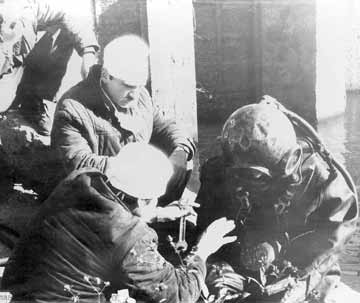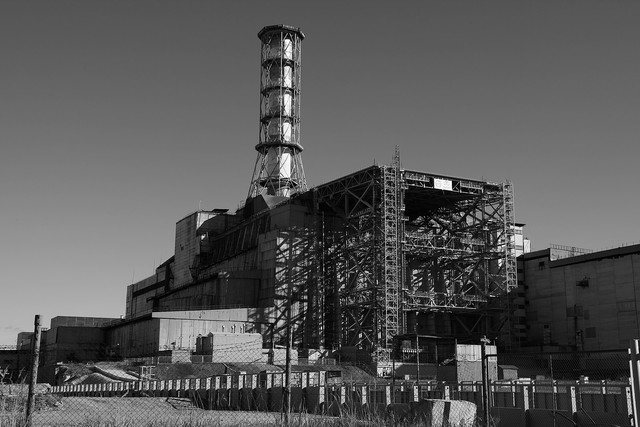Introduction
Chernobyl’s infamous Reactor 4 has been sealed since the catastrophic 1986 meltdown by a hastily erected steel-and-concrete “sarcophagus.” Over time, it was succeeded by the state-of-the-art New Safe Confinement (NSC)—a monumental feat of engineering. Yet the conflict in Ukraine has put even this seemingly invulnerable structure at risk. This article dives into the history, performance, current challenges, and the human dimension of maintaining containment under duress.
1. The Original Sarcophagus: Emergency vs. Longevity
Constructed between June and November 1986 under extreme conditions, the original sarcophagus was never meant to last more than 20–30 years Phys.org+12Wikipedia+12Live Science+12. While it succeeded in locking in up to 95% of the reactor’s radioactive inventory World Nuclear News+3Wikipedia+3Live Science+3, the seams were never fully sealed. Water intrusion, structural instability, and eventual corrosion were never fully controlled The Sun.
2. Enter the New Safe Confinement (NSC): A Century-Scale Solution
Conceived as a long-term remedy, the NSC is an enormous steel arch that fully encloses the original structure. It was constructed adjacent to the reactor from around 2010, slid into place in late 2016, and completed by 2018–2019 YouTube+10Wikipedia+10Reddit+10.
- Size & Scope: Spanning ~270 m wide and reaching dozens of stories in height Wikipedia.
- Design Features: Includes corrosion-resistant materials, air circulation to dehumidify and prevent condensation, and shielded spaces to house robotic cranes and tools for dismantling operations New York Post+4Bechtel+4The Guardian+4.
- Effectiveness: Engineered to prevent both radioactive dust release and water intrusion, enabling the NSC to confine radioactive material safely for around 100 years Wikipedia+15Wikipedia+15Bechtel+15.
3. Has Any Air or Radiation Escaped?
To date, there’s no confirmed incident of airborne radiation escaping through the NSC. The inner containment has remained intact, and environmental radiation levels have held steady under rigorous monitoring World Nuclear News.
4. Russian Drone Strike of February 14, 2025: What Happened?
On that night, a Russian Geran‑2 (Shahed‑type) drone struck the NSC, punching a roughly 15 m² hole in the outer shell and igniting a fire in the inner cladding Lucideon+13Wikipedia+13The Guardian+13.
- Immediate Impact: The fire was controlled, and radiation levels—both inside and outside—remained within normal limits Wikipedia+6AP News+6World Nuclear News+6.
- Damage Assessment: The hole compromises the long-term protective function: increased corrosion risk and exposure to external elements. Repair costs could escalate into tens or even hundreds of millions of dollars, and full restoration may take months to years The Guardian.
- Strategic Response: Ukraine, in coordination with the EBRD and technical experts, is analyzing the damage and planning repairs; preliminary results were expected by May 2025 Bechtel+3Reuters+3The Guardian+3.
5. Repairing the Shield: Risks, Strategies, and Worker Safety
Repair Challenges:
- The NSC was not engineered to withstand military attacks, complicating repair logistics The Sun+1.
- The inner cladding damage, rust risk, and need to re-seal the structure demand both urgent and delicate remedial measures The GuardianThe SunReuters.
- Funding constraints persist: the €25 m EBRD contingency fund is insufficient—Western support is expected to cover the cost overrun The Guardian.
Worker Safety:
- Due to high radiation levels closer to the reactor core, repair crews must adhere to strict exposure limits and likely rely on remote operations as much as possible Wikipedia.
- Rotating shifts, shielding protocols, and remote equipment will be vital to keeping crew doses within safe annual thresholds.
Conclusion
From the initial sarcophagus to the cutting-edge NSC, efforts to contain Reactor 4 have been monumental—and effective, until now. The February 2025 drone strike, while not immediately catastrophic, exposed vulnerabilities in the decades-long containment strategy, forcing a reckoning of nuclear safety amid war. Repairing the NSC will be costly, risky, and protracted—but essential to prevent a second Chernobyl. The dedication to both structural integrity and human safety will define this chapter in Chernobyl’s containment saga.


